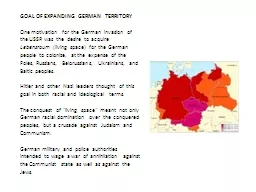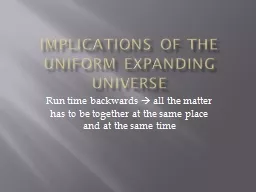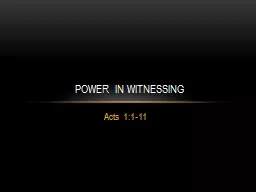PPT-GOAL OF EXPANDING GERMAN TERRITORY
Author : pamella-moone | Published Date : 2016-05-09
One motivation for the German invasion of the USSR was the desire to acquire Lebensraum living space for the German people to colonize at the expense of the
Presentation Embed Code
Download Presentation
Download Presentation The PPT/PDF document "GOAL OF EXPANDING GERMAN TERRITORY" is the property of its rightful owner. Permission is granted to download and print the materials on this website for personal, non-commercial use only, and to display it on your personal computer provided you do not modify the materials and that you retain all copyright notices contained in the materials. By downloading content from our website, you accept the terms of this agreement.
GOAL OF EXPANDING GERMAN TERRITORY: Transcript
Download Rules Of Document
"GOAL OF EXPANDING GERMAN TERRITORY"The content belongs to its owner. You may download and print it for personal use, without modification, and keep all copyright notices. By downloading, you agree to these terms.
Related Documents














